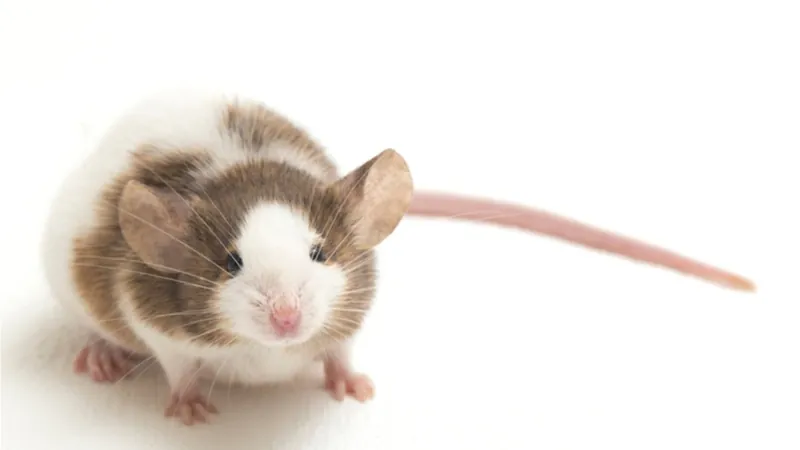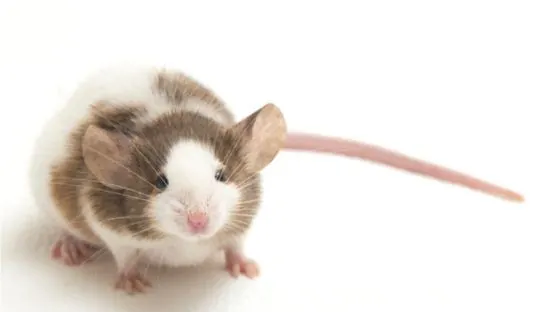Activation of a genetic pathway controlled by the NRF2 gene reduces age-related hearing loss, according to a new study [1]. In the long run, drugs or treatments that target this pathway could help us keep our hearing sharp as we get older.
It’s getting harder and harder to hear
Age-related hearing loss is extremely common, often beginning with an inability to detect higher frequencies and progressing to trouble with mid-frequency sounds. Since conversation consists predominantly of mid-range frequencies, this can make it difficult to follow what’s being said, reducing the quality of life of elderly people.
The precise mechanisms behind age-related hearing loss still aren’t well understood. There’s evidence that oxidative stress might be involved [2], and studies have shown that knocking out the transcription factor NRF2 increased both age-related hearing loss [3] and noise-induced hearing loss [4]. Now, researchers have shown that increasing the activity of the NRF2 pathway in mice reduces the development of age-related hearing loss.
Helping mice hear
The experiments were done in a mouse strain that loses its hearing relatively early. In this strain, 5-month old mice are already a bit hard of hearing, and 12-month old mice have what the paper calls “fully developed age-related hearing loss”. Before starting their experiments, the researchers confirmed that NRF2 and the genes it controls are expressed normally in this strain even though it develops hearing trouble early.
Secure in that knowledge, they then engineered mice with reduced expression of the gene KEAP1, which suppresses NRF2 expression. With reduced KEAP1, NRF2 expression increases and the genes it regulates become more active. These mice had better hearing when they were 12 months old than wild-type mice, though the difference was only at low and medium frequencies; they performed about the same as wild-type mice at higher frequencies. They also showed that activity of the NRF2 pathway reduced oxidative stress in cochlear tissues, which is probably how it prevents hearing loss.
The ineffectiveness of the treatment at higher frequencies could mean that NRF2 is already more active in tissues that detect mid- and low-frequencies but needs to be boosted even more to prevent oxidative stress in tissues that detect high frequencies. It’s also possible that high-frequency hearing loss results not from oxidative stress but another mechanism, such as mechanical stress. A third possibility is that boosting NRF2 only delayed the onset of hearing loss rather than preventing it and that insensitivity to high frequencies is the first sign of eventual hearing loss in these mice.
Age-related hearing loss (AHL) is a progressive sensorineural hearing loss in elderly people. Although no prevention or treatments have been established for AHL, recent studies have demonstrated that oxidative stress is closely related to pathogenesis of AHL, suggesting that suppression of oxidative stress leads to inhibition of AHL progression. NRF2 is a master transcription factor that regulates various antioxidant proteins and cytoprotection factors. To examine whether NRF2 pathway activation prevents AHL, we used Keap1-knockdown (Keap1[FA/FA]) mice, in which KEAP1, a negative regulator of NRF2, is decreased, resulting in the elevation of NRF2 activity. We compared 12-month-old Keap1[FA/FA] mice with age-matched wild-type (WT) mice in the same breeding colony. In the Keap1[FA/FA] mice, the expression levels of multiple NRF2 target genes were verified to be significantly higher than the expression levels of these genes in the WT mice. Histological analysis showed that cochlear degeneration at the apical and middle turns was ameliorated in the Keap1[FA/FA] mice. Auditory brainstem response (ABR) thresholds in the Keap1[FA/FA] mice were significantly lower than those in the WT mice, in particular at low–mid frequencies. Immunohistochemical detection of oxidative stress markers suggested that oxidative stress accumulation was attenuated in the Keap1[FA/FA] cochlea. Thus, we concluded that NRF2 pathway activation protects the cochlea from oxidative damage during aging, in particular at the apical and middle turns. KEAP1-inhibiting drugs and phytochemicals are expected to be effective in the prevention of AHL.
Conclusion
These findings point towards a possible intervention to delay or prevent age-related hearing loss by inducing NRF2 expression. Nevertheless, there are still many questions to answer, from explaining the persistence of high-frequency hearing loss to figuring out the exact mechanisms linking NRF2 and age-related hearing loss. We hope that research into both the basic biology and possible therapies will continue so that we can keep hearing about advances in longevity research as we age.
Literature
[1] Oishi T, Matsumaru D, Ota N, Kitamura H, Zhang T, Honkura Y, Katori Y, and Motohashi H. Activation of the NRF2 pathway in Keap1-knockdown mice attenuates progression of age-related hearing loss. npj Aging and Mechanisms of Disease (2020), doi: 10.1038/s41514-020-00053-4
[2] Fujimoto C. & Yamasoba T. Oxidative stresses and mitochondrial dysfunction in age-related hearing loss. Oxid. Med. Cell Longev. (2014), doi: 10.1155/2014/582849 [3] Hoshino T, Tabuchi K, Nishimura B, Tanaka S, Nakayama M, Ishii T, Warabi E, Yanagawa T, Shimizu R, Tamamoto M, and Hara A. Protective role of Nrf2 in age-related hearing loss and gentamicin ototoxicity. Biochem. Biophys. Res. Commun. 415, 94–98 (2011), doi: 10.1016/j.bbrc.2011.10.019 [4] Honkura Y, Matsuo H, Murakami S, Sakiyama M, Misutari K, Shiotani A, Yamamoto M, Morita I, Shinomiya N, Kawase T, Katori Y, and Motohashi H. NRF2 is a key target for prevention of noise-Induced hearing loss by reducing oxidative damage of cochlea. Sci. Rep. (2016), doi: 10.1038/srep19329


